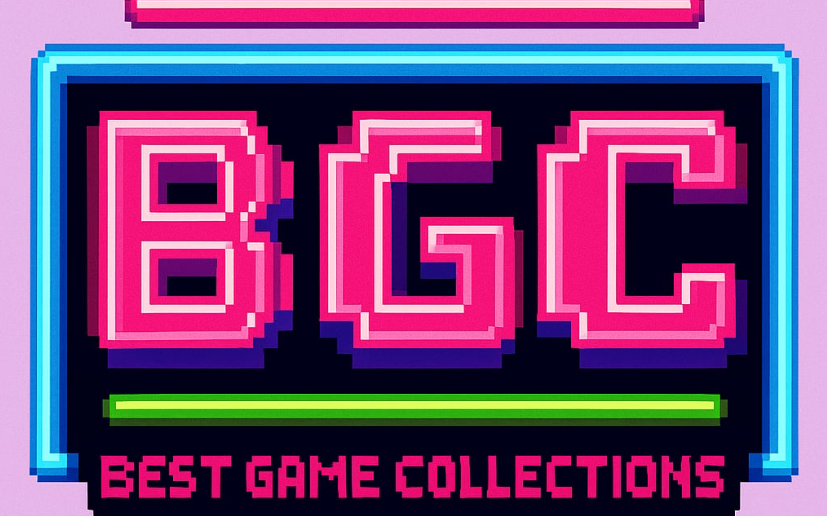 Alright team, let’s begin. Fantasy Grounds VTT from SmiteWorks USA, LLC captured my attention. I am impressed by its many features on one robust platform. Its innovative features include dynamic line-of-sight, 3D-like token management, and cross-platform play for TTRPG campaigns. For strategy fans, linking NPCs to spells and items is a huge benefit. The steep learning curve rewards thoughtful planning.
Alright team, let’s begin. Fantasy Grounds VTT from SmiteWorks USA, LLC captured my attention. I am impressed by its many features on one robust platform. Its innovative features include dynamic line-of-sight, 3D-like token management, and cross-platform play for TTRPG campaigns. For strategy fans, linking NPCs to spells and items is a huge benefit. The steep learning curve rewards thoughtful planning.
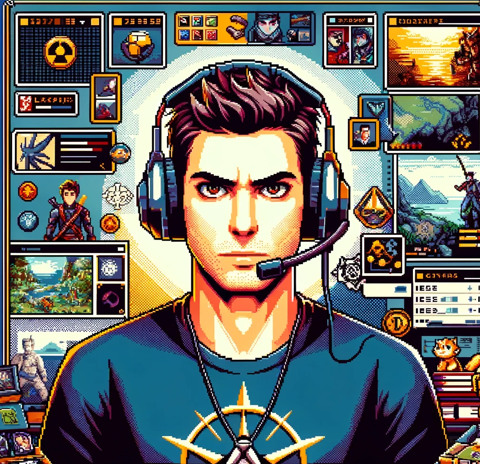 I completely agree. I have spent countless hours exploring every corner of Fantasy Grounds VTT. Updated visuals and artistic touches, including enhanced drawing tools and animated effects, create a polished feel. I am fascinated by the comprehensive asset libraries. They include the Shockbolt GMW Kit and Torsten’s Asset Pack that help me build my campaign. Some users mention a steep initial learning curve. For detail-oriented users, the learning curve is a worthwhile investment.
I completely agree. I have spent countless hours exploring every corner of Fantasy Grounds VTT. Updated visuals and artistic touches, including enhanced drawing tools and animated effects, create a polished feel. I am fascinated by the comprehensive asset libraries. They include the Shockbolt GMW Kit and Torsten’s Asset Pack that help me build my campaign. Some users mention a steep initial learning curve. For detail-oriented users, the learning curve is a worthwhile investment.
 Absolutely. It is built and published by SmiteWorks USA, LLC, which shows its versatility. I love discovering hidden secrets and using preloaded modules for systems like Dungeons & Dragons 5E or Pathfinder. It keeps gameplay fresh and opens many possibilities. Imagine running a spontaneous session with friends without worrying about subscription fees.
Absolutely. It is built and published by SmiteWorks USA, LLC, which shows its versatility. I love discovering hidden secrets and using preloaded modules for systems like Dungeons & Dragons 5E or Pathfinder. It keeps gameplay fresh and opens many possibilities. Imagine running a spontaneous session with friends without worrying about subscription fees.
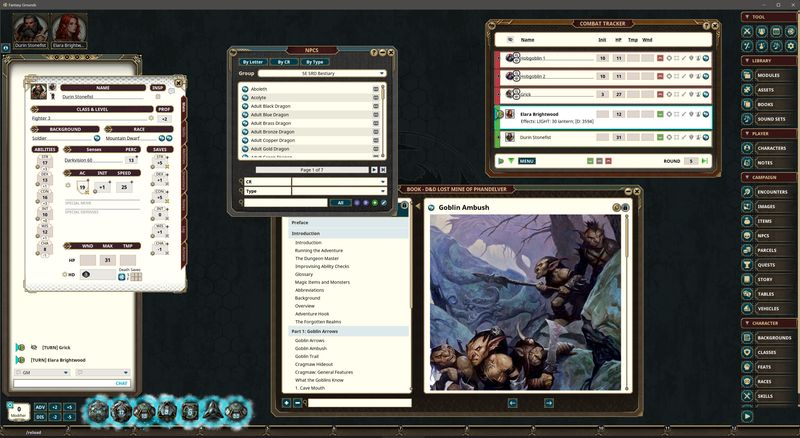
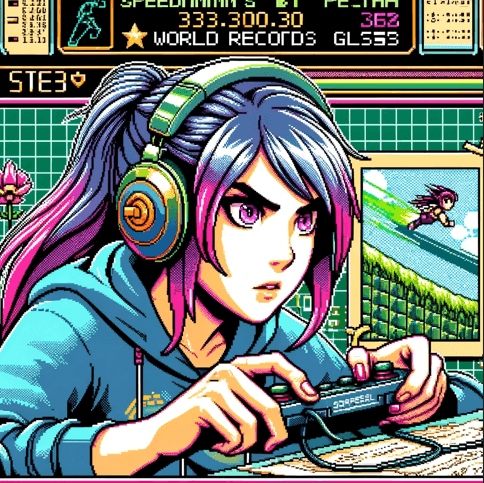 And for those of us who live for optimization, Fantasy Grounds really offers sweet potential. While I’m not exactly speedrunning TTRPG setups, the free hosting feature and seamless network lobby functionality are like the speed boosts of the VTT world. It means less time fiddling with configuration and more time diving into the game. I’ve been watching how players use the tile-based map building and dynamic line-of-sight to craft rapid battle maps—it’s inspiring for tweaking my own session setups to be both fast and flashy.
And for those of us who live for optimization, Fantasy Grounds really offers sweet potential. While I’m not exactly speedrunning TTRPG setups, the free hosting feature and seamless network lobby functionality are like the speed boosts of the VTT world. It means less time fiddling with configuration and more time diving into the game. I’ve been watching how players use the tile-based map building and dynamic line-of-sight to craft rapid battle maps—it’s inspiring for tweaking my own session setups to be both fast and flashy.
 Diving deeper into gameplay mechanics, we’ve got a system that’s as flexible as it is robust. The controls are unconventional but feel intuitive once you get through the initial puzzle of setup. The ability to use items creatively, set up detailed NPC interactions, and even paint with images onto your maps propels it past many generic VTTs. Compared to say, Foundry Virtual Tabletop, Fantasy Grounds prioritizes streamlined integration for official game systems, which complements my love for mastering complexities in character development.
Diving deeper into gameplay mechanics, we’ve got a system that’s as flexible as it is robust. The controls are unconventional but feel intuitive once you get through the initial puzzle of setup. The ability to use items creatively, set up detailed NPC interactions, and even paint with images onto your maps propels it past many generic VTTs. Compared to say, Foundry Virtual Tabletop, Fantasy Grounds prioritizes streamlined integration for official game systems, which complements my love for mastering complexities in character development.
 And that extends into the story and narrative aspect as well. One thing I really appreciate is that the game isn’t just a tool—it’s a canvas. The documentation and modules make it easier for game masters to lay down detailed plot lines without having to build everything from scratch. The narrative pacing, though sometimes subject to the GM’s style, has plenty of potential thanks to robust data libraries for things like the D&D 5e SRD. It’s as if SmiteWorks USA put thought into letting the lore unfurl at its own pace, benefitting those who like to immerse themselves in world-building details.
And that extends into the story and narrative aspect as well. One thing I really appreciate is that the game isn’t just a tool—it’s a canvas. The documentation and modules make it easier for game masters to lay down detailed plot lines without having to build everything from scratch. The narrative pacing, though sometimes subject to the GM’s style, has plenty of potential thanks to robust data libraries for things like the D&D 5e SRD. It’s as if SmiteWorks USA put thought into letting the lore unfurl at its own pace, benefitting those who like to immerse themselves in world-building details.
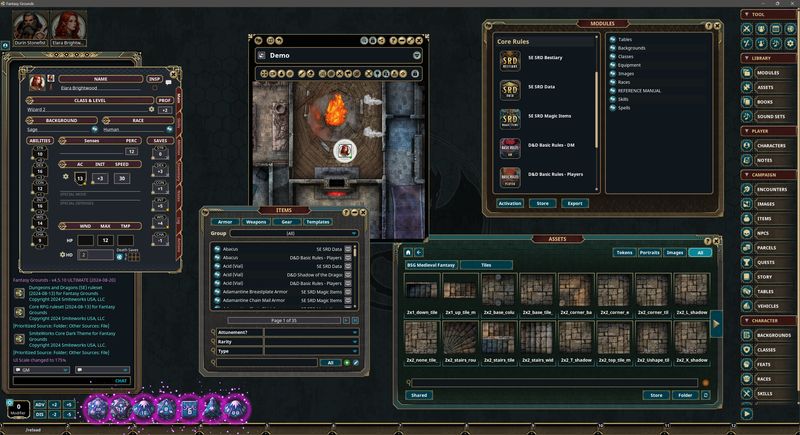
 I love that about it too. Even though I thrive on spontaneous play and epic discoveries, having these story foundations provided is a game-changer. The narrative isn’t forced; it’s a well-laid blueprint that encourages me to subvert expectations. Every map, every character token—even the background details enhance the immersion, making every session feel like a live campaign with dramatic twists and turns. And with the official support for numerous genres, it’s easy to imagine my favorite fantasy settings coming to life.
I love that about it too. Even though I thrive on spontaneous play and epic discoveries, having these story foundations provided is a game-changer. The narrative isn’t forced; it’s a well-laid blueprint that encourages me to subvert expectations. Every map, every character token—even the background details enhance the immersion, making every session feel like a live campaign with dramatic twists and turns. And with the official support for numerous genres, it’s easy to imagine my favorite fantasy settings coming to life.
 When it comes to visuals and graphics, the engine behind Fantasy Grounds is impressive. The blend of top-down 2D and pseudo-3D views, along with its vibrant color palettes, really highlights the mood of a session without bogging down performance. I’ve seen some incredible setups with animated image effects and dynamic lighting—these features are crucial when you need that extra punch without compromising speed. It’s comparable to what you might see in a more visually driven game, yet it remains perfectly optimized for quick load times and fluid gameplay.
When it comes to visuals and graphics, the engine behind Fantasy Grounds is impressive. The blend of top-down 2D and pseudo-3D views, along with its vibrant color palettes, really highlights the mood of a session without bogging down performance. I’ve seen some incredible setups with animated image effects and dynamic lighting—these features are crucial when you need that extra punch without compromising speed. It’s comparable to what you might see in a more visually driven game, yet it remains perfectly optimized for quick load times and fluid gameplay.
 And let’s not forget audio and sound design. Although Fantasy Grounds focuses heavily on visuals and mechanics, the audio cues are subtle yet effective. There’s a pleasant layering of ambient sounds and combat effects that underscore the tension or calm of an encounter, even if there’s currently no full-blown orchestral score like in AAA titles. Still, the built-in cues add to the strategic depth—knowing when a door creaks or footsteps approach can be as critical as reading a digital map.
And let’s not forget audio and sound design. Although Fantasy Grounds focuses heavily on visuals and mechanics, the audio cues are subtle yet effective. There’s a pleasant layering of ambient sounds and combat effects that underscore the tension or calm of an encounter, even if there’s currently no full-blown orchestral score like in AAA titles. Still, the built-in cues add to the strategic depth—knowing when a door creaks or footsteps approach can be as critical as reading a digital map.
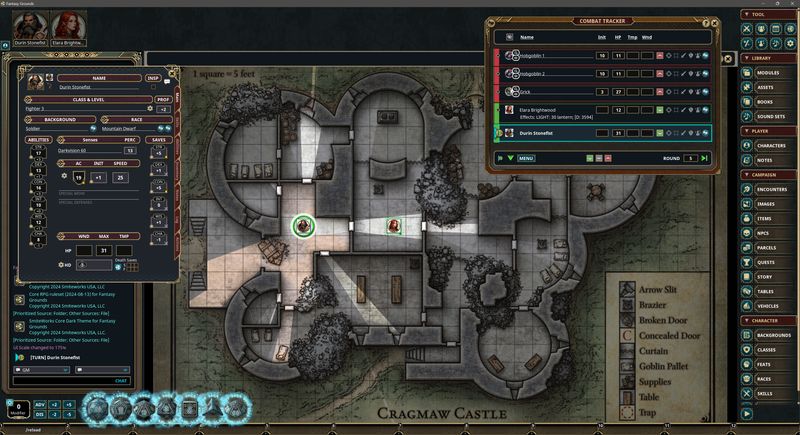
 Speaking of detail, the characters and their development are another strong point. While it’s a virtual tabletop, the way you can link character backstories, items, and spells together is akin to creating a dynamic mini-biography for each figure. I’ve seen some fantastic setups where diverse characters with rich backgrounds come to life, reflecting inclusivity and a range of representation. It gives a purposeful drive to the campaign’s narrative as each arc intertwines with the overarching plot.
Speaking of detail, the characters and their development are another strong point. While it’s a virtual tabletop, the way you can link character backstories, items, and spells together is akin to creating a dynamic mini-biography for each figure. I’ve seen some fantastic setups where diverse characters with rich backgrounds come to life, reflecting inclusivity and a range of representation. It gives a purposeful drive to the campaign’s narrative as each arc intertwines with the overarching plot.
 And that synergy also affects the challenge level. Whether you’re managing tactical combat, solving puzzles, or exploring vast maps, Fantasy Grounds allows for a balanced challenge curve. User feedback has noted spikes in complexity at interesting intervals, rather than arbitrary difficulty bumps. Plus, the system’s modularity means you can tailor encounters to suit your group’s skill levels—ideal for both rookies and veterans alike.
And that synergy also affects the challenge level. Whether you’re managing tactical combat, solving puzzles, or exploring vast maps, Fantasy Grounds allows for a balanced challenge curve. User feedback has noted spikes in complexity at interesting intervals, rather than arbitrary difficulty bumps. Plus, the system’s modularity means you can tailor encounters to suit your group’s skill levels—ideal for both rookies and veterans alike.
 Not to mention the impressive replay value. The fact that countless modules and asset packs are integrated means every session—or even every campaign—can feel different. I love that there are so many unlockable secrets and hidden Easter eggs scattered throughout. It’s comparable to the replayability you’d get from a popular indie title where the mechanics and narrative offer endless configurations for different playthroughs.
Not to mention the impressive replay value. The fact that countless modules and asset packs are integrated means every session—or even every campaign—can feel different. I love that there are so many unlockable secrets and hidden Easter eggs scattered throughout. It’s comparable to the replayability you’d get from a popular indie title where the mechanics and narrative offer endless configurations for different playthroughs.
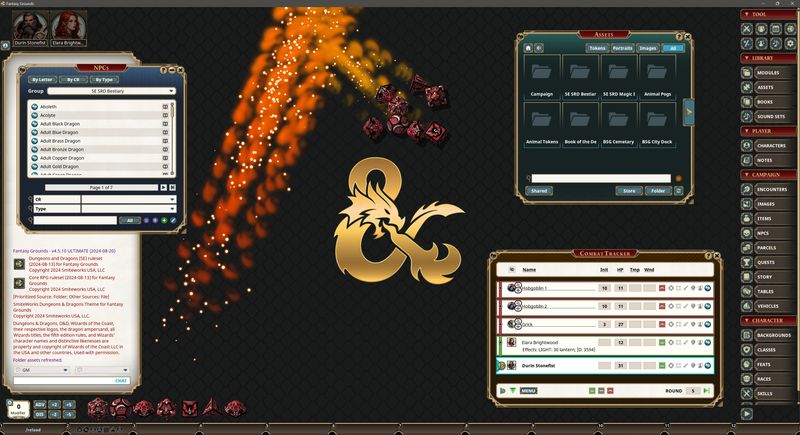
 In final thoughts, Fantasy Grounds VTT isn’t just a tool; it’s a living, breathing platform. And it stands out against its competition. It’s flexible for a strategic mind, immersive for the narrative lover, and optimized enough for those who want rapid setups. This platform cements its place as a cornerstone for TTRPG enthusiasts. For those looking for similar experiences, I’d suggest checking out Roll20 for its broad accessibility, Foundry Virtual Tabletop for its rich modding community, Tabletop Simulator for a physics-based approach to board games, Astral Tabletop for its intuitive design, and DungeonFog for specialized map-building.
In final thoughts, Fantasy Grounds VTT isn’t just a tool; it’s a living, breathing platform. And it stands out against its competition. It’s flexible for a strategic mind, immersive for the narrative lover, and optimized enough for those who want rapid setups. This platform cements its place as a cornerstone for TTRPG enthusiasts. For those looking for similar experiences, I’d suggest checking out Roll20 for its broad accessibility, Foundry Virtual Tabletop for its rich modding community, Tabletop Simulator for a physics-based approach to board games, Astral Tabletop for its intuitive design, and DungeonFog for specialized map-building.
 I second that. Every one of these alternatives has its own merits. Yet Fantasy Grounds has carved a niche that appeals to deep, intricate campaign builders like myself. It’s where every detail matters.
I second that. Every one of these alternatives has its own merits. Yet Fantasy Grounds has carved a niche that appeals to deep, intricate campaign builders like myself. It’s where every detail matters.
 For adventurers who crave a mix of narrative and open-world exploration, Fantasy Grounds is a vibrant hub of potential. Plus, it’s always exciting to see how developers like SmiteWorks USA, LLC continue to push the envelope.
For adventurers who crave a mix of narrative and open-world exploration, Fantasy Grounds is a vibrant hub of potential. Plus, it’s always exciting to see how developers like SmiteWorks USA, LLC continue to push the envelope.
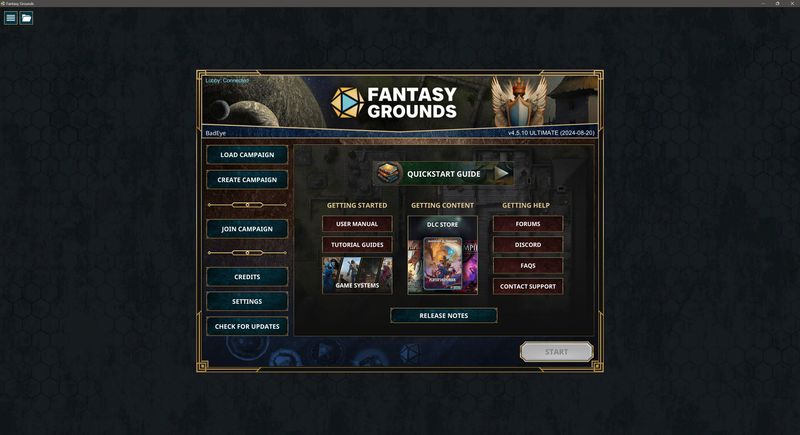
 Looking to hone your speedrunning setup or dive into a robust environment, Fantasy Grounds has something unique to offer. I’ll be watching for more updates that might even shave off a few extra seconds in setup times!
Looking to hone your speedrunning setup or dive into a robust environment, Fantasy Grounds has something unique to offer. I’ll be watching for more updates that might even shave off a few extra seconds in setup times!
 All in all, each of these platforms gives us a different flavor of immersive tabletop action. Fantasy Grounds certainly stakes its claim with an impressive blend of mechanics, narrative potential, and cutting-edge design. Happy gaming, everyone!
All in all, each of these platforms gives us a different flavor of immersive tabletop action. Fantasy Grounds certainly stakes its claim with an impressive blend of mechanics, narrative potential, and cutting-edge design. Happy gaming, everyone!
